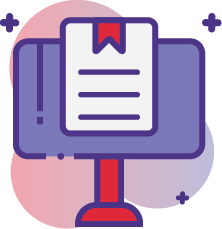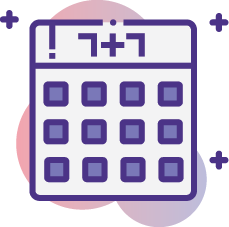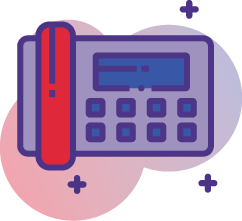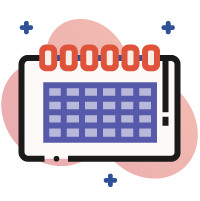
It was a beautiful Saturday, and Warren and I were outside cleaning the yard. Since we just moved in, we had a lot of work as it had been years since any brush was cleared, trees were trimmed, or any care had been put towards the yard. I was excited to get to work.
I was a machine! The workout I got last Saturday was like running a marathon. I felt great, and I got into a fantastic groove of pulling up weeds, old grapevine, and dead branches. I worked for hours and hours that day, and I slept like a log that night.
When I woke up in the morning I was completely covered in poison ivy. From my neck to my feet. That was ten days ago, and each day new rashes appear. I’m exhausted and sore, and I’m on major medication to alleviate some of its pain.
I feel so stupid. I’m almost 55 years old, and it never crossed my radar to even look for poison ivy. I’m not a city kid, I can identify what poison ivy looks like, and I’ve had it before (albeit, not for the last 40 years).
My mind was elsewhere while I was working, and this distracted mistake has cost me countless hours of lost sleep and discomfort.
This is not the first time a distracted mistake has embarrassed me either, and I’m willing to bet you’ve done the same from time to time.
I have:
- forgotten to include the attachment on an email
- sent emails to the wrong person
- added up expenses or created invoices incorrectly
- answered the same email more than once
- forgot where I put my keys, phone, facemask (and more)
- stepped or pulled into traffic without looking and have narrowly avoided accidents
- and many, many more!
I’ve made mistakes that I shouldn’t have because my mind was somewhere else. I had lost focus on what I was doing and instead operated on automatic pilot.
The dangers to my physical safety are undoubtedly substantial, but they also affect my professional reputation.
Here are some tips to help keep us focused and not make distracted mistakes:
- Break the task into steps. If I had looked at the waterfront and broke it into steps, I would have coached myself to take out the dead branches, followed by the grapevine, and then the scrub. I might have seen all the poison ivy laying low to the ground. Instead, I just jumped in without really surveying what I was ripping out. I didn’t evaluate the task properly at all.
If we are doing budget calculations, we would break the task into steps and look at the different categories instead of just jumping into the budget anywhere and jumping all over the place. By not breaking it down, we are leaving to chance that we won’t miss something important.
Even if you have done the task a million times (like sending an email), remind yourself of the steps required at the beginning; write the response, add the attachment, add the email address, proofread, and then send. Knowing you have five steps to responding to an email causes you to make sure you’ve done all five steps each time.
[ctt template=”3″ link=”dQNf4″ via=”yes” ]Even if you have done the task a million times (like sending an email), remind yourself of the steps at the beginning of the task.[/ctt]
- I talk to myself, and I need to be conscious of encouraging that running conversation in my head about the task at hand. I typically don’t work with the radio on because I find myself listening to the DJ or singing along with the music I love. My focus is distracted and is on the music or story I am listening too, and I’m not paying attention to the details. So now, I prefer silence and having running conversations with myself about what I am doing. Sometimes they are out loud, and sometimes they are silent, but I find that if I keep my mind focused on what I am doing, then it is easier for me not to miss steps or make mistakes.
I love to listen to audiobooks, and often would listen to them when I was out for a run or on a long drive. I’ve had to stop doing that as I have (more than once) not paid attention to drivers around me and put my life in danger. I was not paying attention to what I was doing, and instead completely enraptured by the book or podcast.
- Follow the Pomodoro Technique. It is a short-burst hyper-focus technique that allows you to get lots done with intense focus.
- Choose a task you want to work on
- Set the Pomodoro to 25 minutes (the Pomodoro is the timer)
- Work on the task until the Pomodoro rings, then put a check on your to-do list indicating you have done the task
- Take a short break (5 minutes is plenty)
- Every 4 Pomodoros take a more extended break
Check out this link for many apps that are based on the Pomodoro Technique https://www.jotform.com/blog/best-pomodoro-app/
[ctt template=”3″ link=”ud4WT” via=”yes” ]Do you use the Pomodoro Technique each morning? I do, and here is how it works for me.[/ctt]
I do this each morning. I spend 25 minutes cleaning up my email without distractions. I take a break and make a pot of tea. I come back up and update my social media (this is part of my job). I take a break. I work on upcoming workshops (research, preparation, writing). I take a break. I work on any outstanding proposals. I take a break. That is my first few hours each morning. Afternoons are spent a little less structured. The trick is that I don’t get stuck doing one thing for hours, and I don’t jump from task to task during one of my 25 minute focus times. I close my social media when I’m working on email, and I close them both when I’m working on my workshops. If I need my email open, I rarely jump to answer an email when I’m working on a different Pomodoro. The most anything waits is 25 minutes. I think that is reasonable, and it allows me to maintain my focus and not get distracted.
I want to think that I won’t ever get poison ivy again, but as I walked around the yard this weekend looking at the clean-up still to be done, I realized that our property and waterline are completely overrun with poison ivy. I do promise that I won’t be so distracted again that I’ll forget the consequences of not paying attention to what I am doing.









